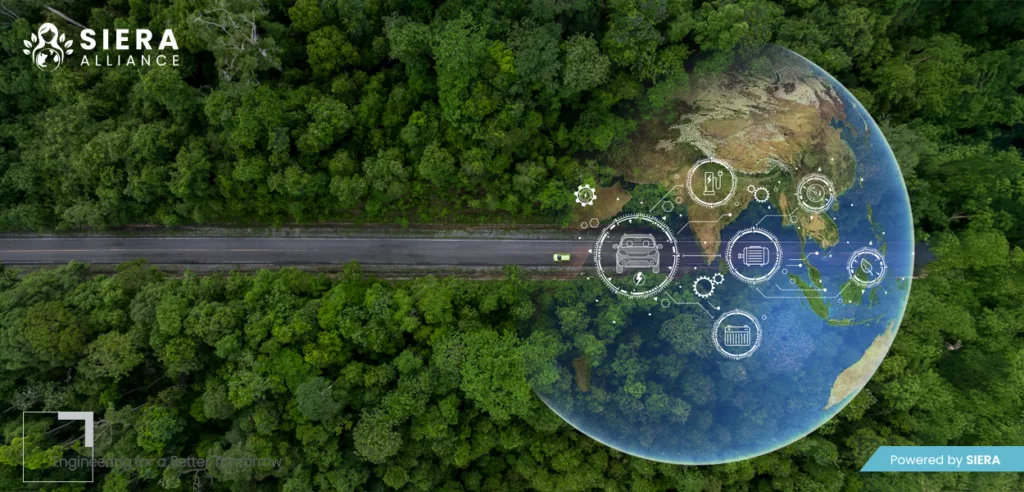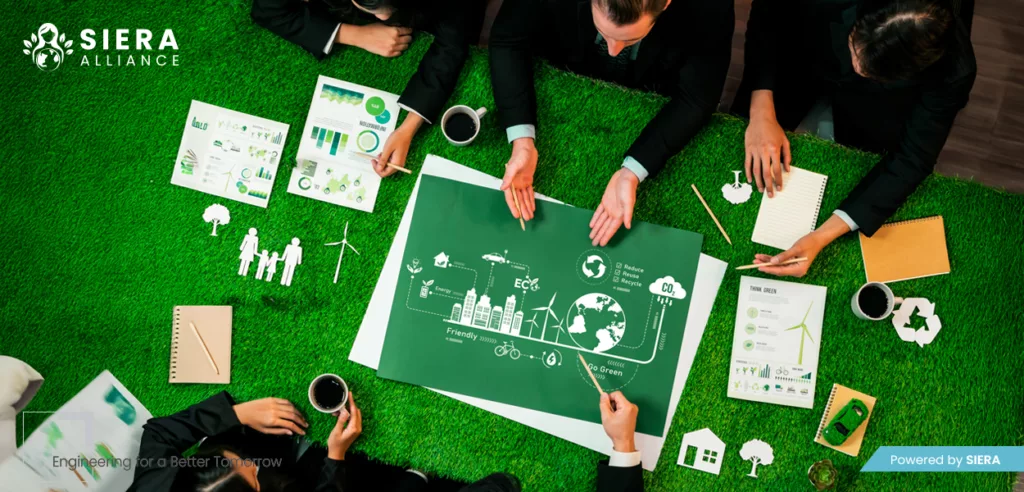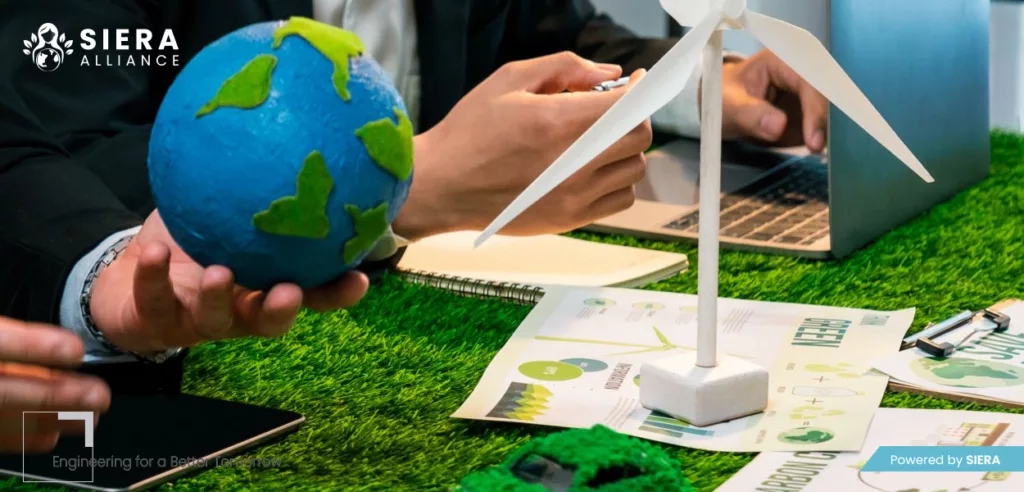With climate change, social inequality and resource scarcity becoming the biggest concerns of our time, businesses must rethink how they operate to remain competitive. Today, integrating sustainability into corporate strategy affects far more than compliance; from investor expectations to consumer preferences and climate resilience, the benefits of sustainable enterprise far outweigh the challenges of transformation.
But much like digital transformation, adopting sustainable strategies requires businesses to reimagine their operations across the supply chain. There is no one-size-fits-all solution, but the organizations that can embed sustainable thinking into their processes enjoy greater brand loyalty and talent retention while unlocking their operational efficiency, mitigating risks and enhancing long-term profitability.
Understanding Corporate Sustainability
Corporate sustainability refers to an approach where economic success is achieved in harmony with environmental preservation and social responsibility. Originating from the principles of sustainable development, corporate sustainability is a comprehensive strategy that integrates ethical, environmental and financial goals.
It is typically defined through three interconnected pillars:
- Environmental Sustainability: Highlights practices that reduce carbon emissions, promote renewable energy, eliminate toxic substances and support circular material flows through recycling and waste reduction.
- Social Sustainability: Focuses on health, safety, equity and empowerment of all stakeholders, from employees and customers to the broader community.
- Economic Sustainability: Ensures long-term business viability by creating value through innovation, efficiency, and resilience. This can involve redesigning products, reducing waste and investing in green jobs.
Each of these pillars comes with its own set of challenges, opportunities and KPIs, and excelling in all three requires businesses to not approach sustainability in a silo but to, instead, align it with their core operations.
Developing a Sustainable Strategy for Business Growth
A sustainable business strategy begins with the development of a clear, measurable and adaptable framework. This framework serves as a blueprint for driving sustainability across the organization’s key departments and supply chains.
Key components include:
- Establishing Objectives: Businesses must set well-defined sustainability targets aligned with the United Nations Sustainable Development Goals (UN SDGs). These might include reducing emissions, improving diversity or promoting ethical sourcing.
- Setting SMART Goals: Objectives should be Specific, Measurable, Achievable, Relevant and Time-bound. For example, targeting a 30% energy use reduction over three years enhances clarity and accountability.
- Team Engagement: Every transformation’s success hinges on its workforce. Involving staff at all levels cultivates ownership and helps embed sustainability into the organizational culture.
- Monitoring Progress: Regular tracking, transparent reporting and the use of digital dashboards ensure that progress is visible and measurable.
- Continuous Improvement: Sustainability is dynamic. As challenges evolve, so should strategies. By remaining agile and responsive to new insights, businesses can materialize their commitment to long-term sustainability goals.

Corporate Sustainability: The Foundation for Long-Term Success
Effectively executing your sustainability strategy demands a holistic approach that incorporates every level of your operations. Rather than retrofitting green features onto existing infrastructure, sustainability must be built into business models from the ground up.
This includes core areas of action like:
- Eco-Friendly Product Design: Prioritize recyclable, biodegradable or low-impact materials to reduce the environmental impact over your product’s lifecycle.
- Efficient Resource Use: Implement water-saving systems, energy-efficient equipment and lean manufacturing principles to reduce waste and costs.
- Ethical Supply Chains: Monitor sourcing practices to ensure labor rights, environmental protection and reduced emissions.
- Community Partnerships: Align business activities with the needs of local communities through education, health programs and philanthropy.
These practices not only ensure regulatory compliance but also strengthen brand reputation, foster innovation and build operational resilience.
ESG Reporting: Measuring and Communicating Sustainability Efforts
Transparent Environmental, Social and Governance (ESG) reporting is now a hallmark of responsible enterprises. It offers stakeholders insight into a company’s environmental footprint, social contributions and governance standards.
Best practices include:
- Data Foundation: Use integrated platforms, like SustainSuite, to collect and analyze data across operations and suppliers.
- Standardization: Align disclosure reports with recognized frameworks such as the GRI, SASB, or TCFD.
- Stakeholder Engagement: Report findings clearly and engage stakeholders to inform them of future goals and build trust.
Accurate ESG reporting not only meets compliance standards but also attracts investors, enhances brand value and enables continuous improvement by highlighting problem areas and tracking progress.
Sustainable Business Practices in Operations and Facilities Management
Reporting alone isn’t a viable strategy. Organizations need to simultaneously take active steps to reduce the footprint of their operations. Optimizing business facilities is essential for that goal, as it contributes to reduced emissions and greater resource efficiency.
Key strategies include:
- Energy Efficiency: Using smart HVAC systems, LED lighting and automated controls to optimize and reduce energy usage.
- Green Infrastructure: Incorporating passive solar design, green roofs, and rainwater harvesting into building plans to reduce the energy burden.
- Waste Minimization: Implementing recycling programs, sourcing sustainable materials and tracking resource consumption with real-time software to optimize resource usage.
- Health and Productivity: Improving air quality, lighting and ergonomic design to enhance employee wellbeing and contribute to a more productive workforce.
Sustainable operations don’t just reduce a corporation’s environmental impact, they also enable cost savings while improving the physical workplace environment.
Climate Risk Management and Resilience in Business
As extreme weather events like floods, droughts and cyclones grow in frequency, businesses around the world are increasingly vulnerable to physical climate threats. Embracing corporate sustainability doesn’t just mitigate these climate risks, it also safeguards supply chains against global crises.
Businesses can begin with three practical steps to bolster their climate resilience:
- Risk Mapping: Using climate databases, organizations can identify their exposure to physical (e.g., floods) and transitional (e.g., regulation changes) risks based on their industry and geography.
- Stakeholder Integration: Including climate considerations in risk management discussions with finance, operations, and sustainability teams can facilitate more proactive management.
- Phased Implementation: Starting with simplified assessments of high-impact risks and gradually building toward comprehensive risk quantification reduces the workforce’s administrative burden.
Investing in resilience measures, such as green infrastructure and diversified supply chains, can buffer enterprises from disruptions caused by climate events. Furthermore, blended finance models and public-private partnerships offer innovative ways to fund resilience strategies, particularly for SMEs.
Leveraging Intelligent Operations for Sustainability
The efficiencies unlocked by technological innovation serve as a cornerstone of modern sustainability efforts. By leveraging smart tools and data-driven systems, businesses can enhance performance, minimize waste and track their environmental targets. Some key sustainable technologies include:
- Smart Grids & Energy Platforms: Enable energy optimization, real-time monitoring and integration of renewable power.
- Artificial Intelligence: Assists in supply chain management by forecasting demand, limiting overproduction and managing Scope 3 emissions.
- Blockchain & IoT: Provides traceability for materials, enabling ethical sourcing and transparent reporting.
- Circular Technology Systems: Facilitate recycling, product life extension and material recovery, fostering circular economy practices.
These digital solutions enhance operational efficiency while driving measurable sustainability outcomes.

The Benefits of Sustainability in Business
Integrating sustainability across the enterprise isn’t just an environmentally driven pursuit. Corporate sustainability also yields substantial rewards like:
- Profitability: Energy and waste reduction cut operational costs, improving the bottom line.
- Resilience: Accounting for weather risks future proofs your operations against climate and supply chain disruptions.
- Reputation: Achieving a strong ESG score builds consumer and investor trust, bolstering brand reputation in the marketplace.
- Compliance: Adapting to environmental regulations and standards proactively minimizes the risk of penalties while attracting green investments.
- Innovation: Sustainability drives product, process and business model innovation, fostering outside-the-box thinking and an efficiency mindset across the workforce.
Firms committed to sustainability consistently outperform their peers, reaping the benefits of long-term financial health and stakeholder loyalty.
Sustainability Networks and Collaborative Opportunities for Businesses
While the aforementioned strategies will help bolster your organizational posture, achieving a sustainable enterprise landscape requires a collective effort. Businesses can amplify their impact by collaborating with partners across sectors and communities.
- Supplier Collaboration: Align sustainability targets and share best practices to reduce upstream impacts and scope 3 emissions.
- Employee Engagement: Empower staff to contribute to your sustainability journey through training programs, participation opportunities and incentives.
- Community Investment: Support local programs that address education, environmental stewardship and social equity.
- Investor Transparency: Report progress and align ESG strategies with investor expectations.
- NGO Partnerships: Co-create solutions with the public sector to boost efforts in conservation, education and development.
Collaborative models build stronger, more inclusive ecosystems where sustainable goals are pursued communally.
Sustainable Business Growth: Key to a Profitable Future
Sustainability today unlocks more opportunities than ever before. In fact, research confirms that businesses with a strong ESG performance consistently achieve better financial results than competitors with no sustainability strategies.
As more and more companies make the transition, corporate sustainability will soon become the norm. Start your transformation early so you can get ahead of the curve and achieve market leadership in your sector by:
- Attracting Ethical Investment: ESG-focused funds and investors are increasingly shaping capital markets.
- Retaining Talent: Employees prefer working for organizations that align with their values.
- Unlocking Innovation: Green product development meets growing consumer demand for responsible alternatives.
- Mitigating Risk: Proactively addressing climate and social risks enhances business continuity.
By embedding sustainability into the organization’s strategy, operations and culture, businesses can not only address today’s pressing challenges but also lead the way toward a more equitable and healthy future.
At a time when the stakes for people and the planet have never been higher, sustainability is not just good business practice—it is the only way forward.











